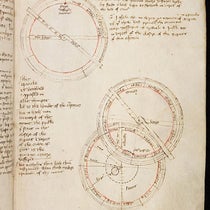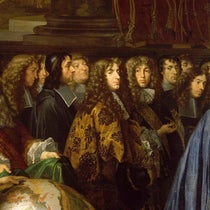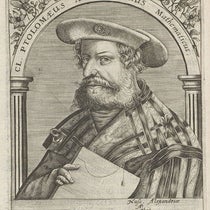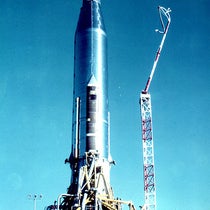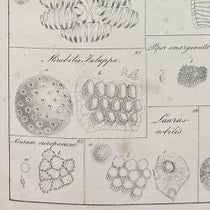Scientist of the Day - Alexandre-Émile Béguyer de Chancourtois

Detail of the top of the Vis tellurique or tellurique screw of Béguyer de Chancourtois, showing the first 25 elements, a redrawing of the 1862 original, reproduced in The Periodic Table: Its Story and its Significance, by Eric Scerri, p. 79, 2nd ed., 2020 (Linda Hall Library)
Alexandre-Émile Béguyer de Chancourtois, a French geologist with an interest in chemistry, died Nov. 14, 1886, at age 66. He was born in Paris on Jan. 20, 1820, and educated at the prestigious École polytechnique, specializing in geology, mining, and mine surveying. He taught for much of his career at the school of mines in Paris. The French refer to him as Béguyer de Chancourtois, and we will do the same, although most English sources treat his last name as Chancourtois or De Chancourtois.
Béguyer de Chancourtois constructed the first periodic table of the elements in 1862, seven years before Dimitrii Mendeleev in Russia, and two years before John Newlands in England. He found that if he placed the elements on a helix according to their approximate atomic weight, and if the helix completed one turn every 16 units, then elements with similar chemical properties lined up directly above or below one another. So oxygen (atomic weight 16) was on the same vertical line as sulfur (32), while carbon (12) lined up with silicon (28), sodium (23) with potassium (39), and fluorine (19) with chlorine (35). He had to approximate many of the atomic weights, and change others to make them fit the scheme, but it still worked surprisingly well for a first effort (first image).

First paragraph of the paper announcing the periodic chemical system of Alexandre-Émile Béguyer de Chancourtois, “Mémoire sur un classement naturel des corps simples ou radicaux appelé vis tellurique," Comptes rendus hebdomadaires des séances de l’academie ds sciences, vol. 54, p. 757, 1862 (Linda Hall Library)
Béguyer de Chancourtois announced his scheme in a paper to the Academy of Sciences in Paris and published it in the Compte rendus of the academy in 1862 (third image), and followed it up with two more papers that same year. But the editors decided against publishing a diagram that showed the vis tellurique, or tellurique screw, as Béguyer de Chancourtois called his table, and the papers were hard to comprehend without visual support. Béguyer de Chancourtois paid for a private printing of his papers in 1863, in the form of a pamphlet that included the diagram, and distributed it, but it had little impact. He wrote like a geologist, and the chemists dismissed him.

Vis tellurique or tellurique screw, redrawing of the original diagram of Béguyer de Chancourtois, not printed when it should have been in 1862, privately printed in 1863, reproduced in The Periodic Table: Its Story and its Significance, by Eric Scerri, p. 79, 2nd ed., 2020 (Linda Hall Library)
I have never seen the pamphlet, nor any reproduction of the tellurique screw as printed in the pamphlet; the modern forms are mostly redrawings, some translated into English. We show you one printed in The Periodic Table: Its Story and its Significance (2nd ed., 2020), by Eric Scerri, which provides the best account of the work of Béguyer de Chancourtois (first and fourth images).
Since Béguyer de Chancourtois's tellurique screw was a three-dimensional helix, and he intended the printed diagram to be wrapped around a cylinder, it is not surprising that someone in England in the 1920s made such a three-dimensional screw that you could rotate with a crank; it can be seen in the Science Museum in London. They even made a short video illustrating its use that I found quite helpful, and which includes many close-up views of the three-dimensional diagram, and is narrated by an informed curator.
Béguyer de Chancourtois received no recognition for his accomplishment during his lifetime. It wasn't until after his death, in 1889, that an English chemist rediscovered his work and argued that Béguyer de Chancourtois was the real inventor of the periodic table. He didn't convince many people, other than the maker of the tellurique screw in the Science Museum. But that chemist was absolutely right. Béguyer de Chancourtois did construct the first table that revealed the periodicity of the elements. There is no way around it.
If anyone knows where I can find an image of the original 1862 engraving of the tellurique screw, please let me know. Meanwhile, you can read about other pre-Mendeleev attempts at a periodic table in our posts on Newlands, Stanislao Cannizzaro, Lothar Meyer, and, of course, Mendeleev himself.
William B. Ashworth, Jr., Consultant for the History of Science, Linda Hall Library and Associate Professor emeritus, Department of History, University of Missouri-Kansas City. Comments or corrections are welcome; please direct to ashworthw@umkc.edu.




